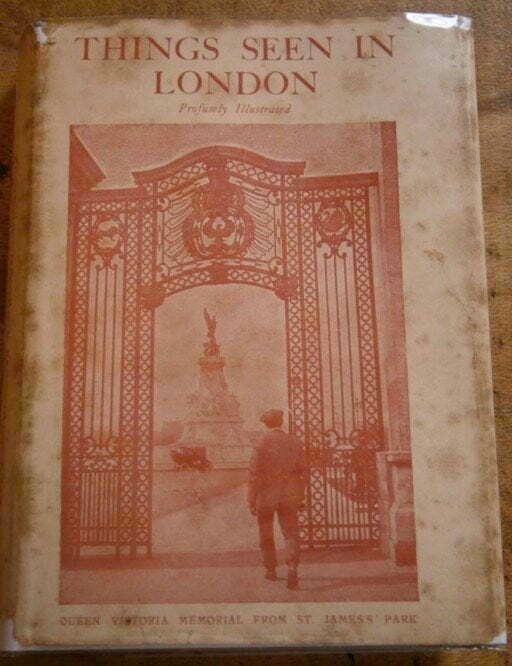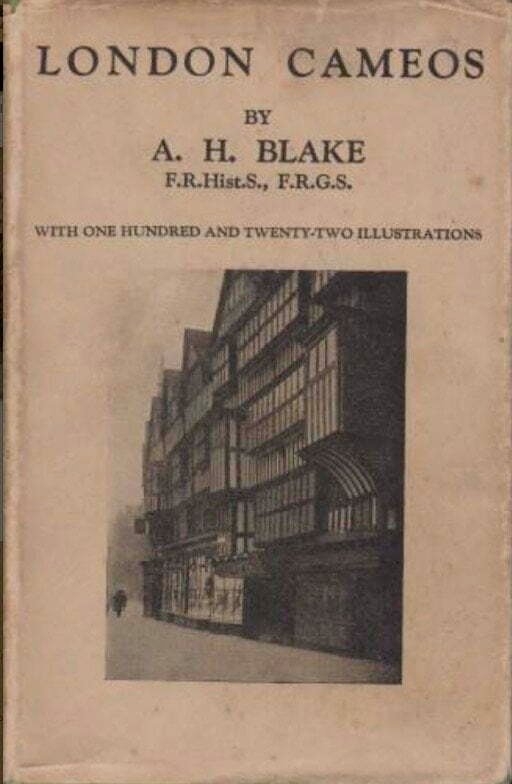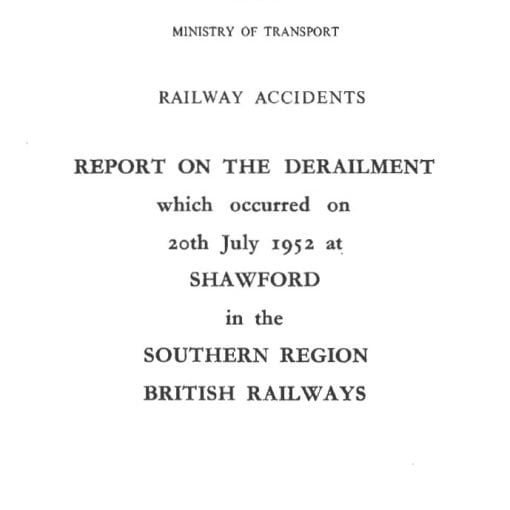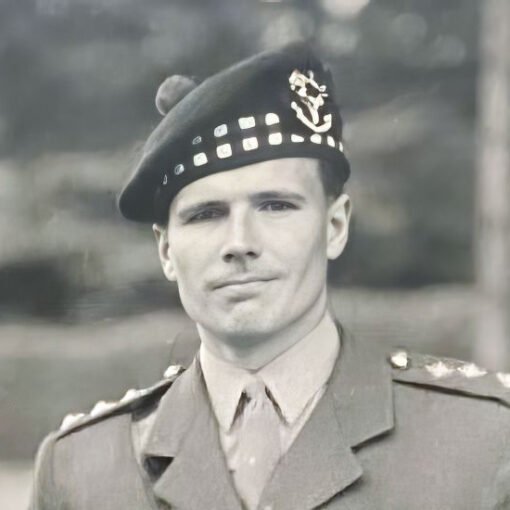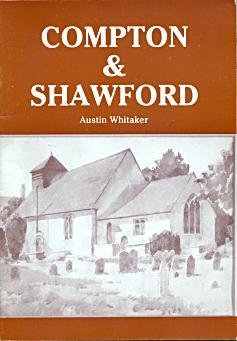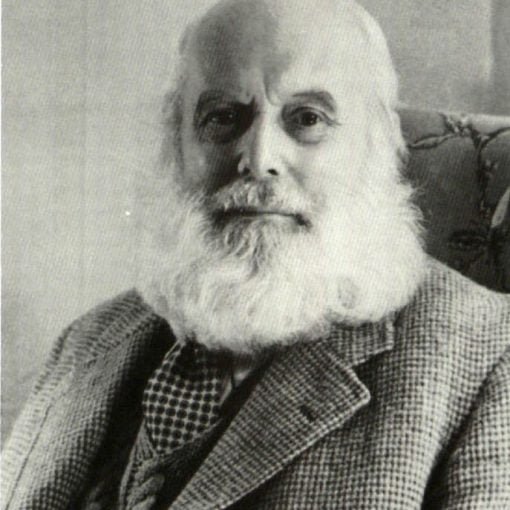Table of Contents
Rev A H W Blake, F.R.Hist.S., F.R.G.S.
Rector of Compton 1902-1903
Alfred Howarth Blake held the benefice for less than two years[1]Compton Near Winchester, Being an Enquiry into the History of a Hampshire Parish, by J.S.Drew. Published by Warren & Son, 1939
J.S.Drew
The Reverend Photographer – A.H.Blake
Serialised in three parts in the Compton & Shawford Parish Magazine; November & December 2020 and February 2021.
The Reverend Alfred Howarth Blake (AHB) was Rector of Compton from April 1902 until the end of December, 1903.
He is hardly mentioned in histories of Compton.
J.S.Drew’s “Compton near Winchester” says only that “Alfred Howarth Blake ..held the benefice for less than two years”.
Barbara Clegg’s “Story of a Quiet Parish”[2]“The Story of a Quiet Parish – Compton and Shawford” by Barbara Clegg, 1963. Published by the C&S Local History Society 2019 in aid of church funds., simply records that, as Rector, Rev. Blake was one of the original governors of Compton School under the 1902 Education Act.
Austin Whitaker’s Compton & Shawford doesn’t mention him at all.
But he had a wide range of skills and experience. By the time he came to Compton, AHB was already a keen and widely published amateur photographer.

His 20 months in Compton were action-packed. More on that next month. After he left here, photography appears to have been his main occupation.
Part 1 – Before Compton
Early life
Alfred Howarth Ward Blake was born on 7 July 1854 in Tamworth, Staffordshire. By the time of the 1871 census, he was a pupil in Malvern[3]Mike Pettigrew, private correspondence. Aged 20, he became an undergraduate at St. Mary Hall, Oxford, which was absorbed into Oriel College in 1902.
The Headmaster
In 1878 AHB became headmaster of Lyttelton Grammar School in Malvern. The school been founded about five years earlier, but pupil numbers were declining.
At the annual prizegiving two years later, he was able to report that “pupils have steadily increased, and the school appears to be in a very prosperous condition”. He had set up a junior school, under a qualified governess, at his own home, and also a “commercial class under a thoroughly practical business man”.
In 1883, after his ordination, he resigned the headship. At his final prize-giving he described further increased numbers, pupils passing with honours in the Oxford and Cambridge Local Examinations, and very satisfactory reports from the external examiners.[4]The British Newspaper Archive (passim)
The High Churchman
AHB must have combined his role as headmaster with training for the priesthood. He was ordained deacon by the Bishop of Worcester on 29 May 1883 and licensed to St. Peter, Cowleigh, on the outskirts of Malvern.
Wikipedia tells us that St. Peter’s, Cowleigh, is a Grade II listed Anglican church, built in 1865. Churchmanship: Anglo-Catholicism. It may well have been Anglo-Catholic during AHB’s time there.
Nowadays, St. Peter’s shares a priest with two other churches in Malvern. It has rebranded as St. Peter’s Arts Church (SPARC; web: sparc.church). It offers contemporary worship on Sundays and space with flexible seating to hire for small conferences and band rehearsals.
In 1888, after four years in Windsor, first as curate at Holy Trinity Parish and Garrison Church and then Senior Curate at Eton, AHB was offered the living at St. Luke’s, Hollis Croft, in the centre of Sheffield. St. Luke’s was in the gift of the Crown, but, as an inner-city church, it was very different to Eton.
A rumour that AHB was a “Ritualist” quickly went viral. They were shocked that candles were used on the altar at Eton. They also thought that a curate whose vicar was chaplain to the Prince of Wales would be too posh for them.
A meeting of St. Luke’s PCC and parishioners was called at short notice to protest against the appointment.
AHB, who had no private means, declined the appointment after learning that a third of the £300 annual stipend would go to the retiring incumbent as pension.
St. Luke’s was closed in 1938 and demolished after the war.
From 1892 to 1896 A.H.B. was chaplain of the Kensington Workhouse and Infirmary. After complaints[5]‘St. Mary Abbots Hospital’, in Survey of London: Volume 42, Kensington Square To Earl’s Court, ed. Hermione Hobhouse (London, 1986), pp. 343-364. British History … Continue reading, he was asked to abandon the procession of the choir outside the chapel, the use of a processional cross on certain occasions, and the use of wafer bread, though he was allowed to use lighted candles at early morning communion in recognition of ‘the good and earnest work’ he was doing.
The Temperance Campaigner
AHB was a strong supporter of the Church of England Temperance Society and gave many talks on the subject.
Initially a moderate, he joined the total abstinence section of the CETS when he came to Windsor.
In May 1888, as Chairman of the Organising Committee of the Eton Branch of the CETS, he convened a large meeting to propose amendments to the Licensing Clauses of the Local Government Bill.
Visiting Eton in 1892 while Chaplain of the Kensington Infirmary, he told the Eton CETS that about a fifth of the people in the Infirmary were there because of their own fault or drink. Because of Sunday drinking, he said, “it was common for working men not to go to work on Monday at all, that in some cases they extended their laziness to Tuesday, and, in some of the colliery districts, to the first half of Wednesday”.
He was quoted in the press as saying that pauperism caused by over-indulgence in drink was costing the ratepayers of London £650,000 annually.
In 1897, the Bishop of Winchester appointed him Hon Secretary of the Diocesan CETS.
The Event Organiser
Just two examples of events organised by ABH and reported in the local press:
September 1887: a river trip by steamboat to Cliveden for the Eton Wick CETS, some 46 in all. Rev A.H.Blake, “having his photographic apparatus with him”, took a group photo.
May 1890: Windsor and Eton Scientific Society. The first field excursion of the members and friends of the Society. No less than eighty persons took part in the day which was organised by the Rev. A.H.Blake, the president for the year. Half a dozen brakes were chartered to convey the party. They visited Eversley Rectory, where Charles Kingsley had lived, to listen to a paper on Kingsley by Rev. Blake and for the photographic section to take some views.
The Administrator
After chaplaincy of the Kensington Workhouse and Infirmary, and two years as Rector of Quarley, near Andover, in early 1899 he was appointed Warden of St. Thomas Home in Basingstoke, known for its support and housing of “friendless and fallen girls and women”.
Illegitimacy rates in the Diocese varied; in Winchester 1 in 17 live births, in Southampton 1 in 24, and in Hartley Wintney 1 in 7 (1902 figures).
At St. Thomas’ 1899 AGM, it was noted that his experience, particularly at the Kensington Workhouse, “has been of such a kind as to fit him in an exceptional degree for the discharge of the responsible and difficult duties belonging to the warden’s office”.
Unfortunately, it didn’t turn out well. Despite his best efforts, the home struggled financially, and in November 1901 he gave notice that he wanted to resign.
The Photographer
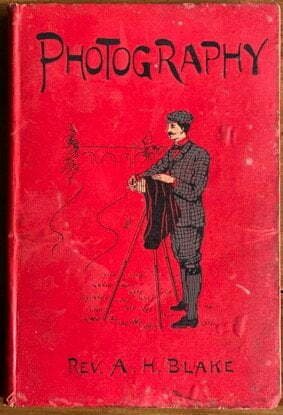
His book “Photography – being Simple Chapters for Beginners on the Art and Practice of Photography” included articles he had written for Amateur Photographer.
The book was published by Routledge in 1898 and already in its third edition by 1899.
See Part II next month for details of his time in Compton with more about his life and art after Compton in Part III.
Part 2 – Rector of Compton
Compton & Shawford in 1902
What was our parish like at the start of the 20th Century?
Changes had been coming fast.

The Railway: Shawford Station (originally called Shawford and Twyford) had opened in 1882. From their homes in Shawford, the new breed of “commuter” could travel to work in Winchester or Southampton or further afield. This new word came from the reduced rate multi-journey tickets which American railroad companies called “commutation tickets”.
“The Island”: In 1886, Cathedral architect John Colson purchased ten acres of Shawford Down from the Winchester bishopric estate and began creating the development known as “The Island”.[6]The Hampshire Chronicle archive at the Hampshire Record Office (passim)
The Golf Club: Twyford and Shawford Golf Club started in 1890 with a 9-hole course on the Down. The Bridge Hotel acted as its headquarters before the Club House was built in 1910.
Shawford Mission Hall opened in 1892.
Parish Council: Following the Local Government Act 1894, the first elections to the new Parish Council were held. In 1896 Shawford Parish Hall was built.
Southdown: The Dean and Chapter of Winchester had been receiving offers to buy parts of Shawford Down for development. Then, in 1899, a local syndicate purchased 135 acres to the south of the Down. Part of the deal was that the Dean and Chapter agreed to preserve the Down itself in perpetuity, for grazing of sheep and recreational purposes such as golf.
The syndicate set up a company called Shawford South Down Estate Limited, with several local directors and Mr. T. Morgan J.P. as chairman. Amongst his many public roles, Thomas Morgan was vice-chairman and later chairman of the Parish Council, and honorary organist and choirmaster at Compton Church.
Death of the Rector: On 16 March 1902 Charles Wickham, much loved Rector of Compton since 1871, died aged 77.
AHB in Compton
If you read Part 1 in last month’s magazine, you will recall that A. H. Blake had been wishing to stand down from his role as Warden of St. Thomas’ Home, Basingstoke for some time.
Back in 1888, when he had been offered the living at St. Luke’s, Sheffield, one of his supporters had pointed out that AHB had already turned down several offers on the grounds that they were not sufficiently challenging for a man of his energies.
His appointment as Rector of Compton was announced in the Hampshire Chronicle of 26 April 1902.
AHB Induction
The Hampshire Chronicle reported that, by the time of his formal institution and induction five weeks later, he had already become very popular. On Saturday 31 May 1902, Compton Church was packed for the service at 12 noon, led by the Bishop of Winchester.
The service was followed by a public luncheon for about 80 in the Parish Hall.
Bishop’s remarks: Speaking after the lunch, the Bishop said that his friendship with the new rector had started nearly 20 years ago when he was a new curate at Windsor and Eton. The people there still had fond memories of him.
The Bishop had noticed all the houses rising up in Shawford and felt that the new Rector would have to overcome some challenges to provide additional church accommodation. He was sure that they had the right man for the job.
AHB introduces himself: Rev. Blake said that he had been told that Compton & Shawford was an ideal parish for any clergyman.
He’d obviously taken a crash-course in parish history because his talk was littered with references to past rectors.
He told the story of William Huntingford, who had come here as a young curate. He rose to be Bishop of Hereford but always retained fond memories of Compton. On retirement, he found a cottage in Compton adjacent to the rectory, which he rented from the Dean and Chapter. In his will, Bishop Huntingford had asked to be buried as near as possible to the pulpit where he had preached his first sermon.
Rev. Blake promised to do his best for the parish and that the wonderfully interesting old church would never be allowed to fall into decay. He and his wife hoped to be here for many years.
Coronation of Edward VII
The coronation of King Edward VII and Queen Alexandra was on Saturday 9 August 1902. It had been postponed at short notice from 26 June 1902 when the King needed urgent abdominal surgery.
A procession, led by a band, marched from the foot of the Down to Compton for a service on the Rectory lawn, then returned to Shawford where refreshments were served to the children in the Parish Hall, and tables had been set up on the Down to serve dinner to about 230.
Games on the Down in the afternoon included an egg-and-spoon race, tug-of-war and cricket. Evening fireworks were followed by a torch-lit procession to the Hall where Mr. J.B.Colson had provided something suitable for each parishioner to toast the new King.
Wickham Window dedication
At morning service on Sunday 21 December 1902, churchwarden J.A.Pearson unveiled the memorial window to Charles Wickham. This window, by F.A.Oldaker of Sutton, Surrey, would be carefully transferred to the new south wall when the church was extended in 1905.
Church Accommodation Controversy
Public Meeting 20 Nov 1902
At a well-attended public vestry meeting in the Parish Hall, the Rector reminded attendees of the Bishop’s words at his induction. The parish had increased by 50 in the past year and a church built for 150 persons could not support a population approaching 600.
Resolution 1, proposed by churchwarden J.A.Pearson: “That this vestry meeting considers that an increase of our parish church accommodation should be provided and that a committee be elected to consider the matter, with power to add to their number.”
Resolution 2, proposer Mr T. Morgan: “That …immediate steps should be taken for the erection of a new church.”
Both resolutions were carried, but there were clear signs that the village would split.
J.A.Pearson and two local architects, John B Colson (who had succeeded his father as cathedral architect) and Herbert Kitchin, all thought that the old church could and should be extended.
T.Morgan (chairman of Shawford South Down Estate Ltd,), Edward Eames (who lived at Silkstead Priors and who now owned almost all of the former Heathcote land in the parish), and H.G.Whitchurch (Parish Council chairman and churchwarden) were among those favouring a new church.
In line with Resolution 1, a further meeting on 29 November set up a committee of 15, to be chaired by the Rector.
General Committee Meeting 22 Jan 1903
The committee met to finalise its report. Messrs Colson and Kitchin had presented plans for the enlargement of the old church, but the majority of the committee favoured a new church with seating for 350. Free sites had been offered by Edward Eames (west of the Otterbourne Road), by Shawford South Down Estate, and by the Ecclesiastical Commissioners (by the chalk pit on the Down).
Public Vestry Meeting 30 Jan 1903
The committee’s recommendation to the Public Vestry meeting was that a new church be built at an estimated cost of £4,000 on a site near the chalk pit.
To applause, J.A.Pearson proposed an amendment, seconded by J.B.Colson, to postpone work on a new church and take immediate steps to enlarge the present building.
After much discussion, the amendment was defeated by 36 to 16 votes. The committee’s proposal passed by 37 to 16.
The Rector had abstained from voting in order to remain neutral. After the decision had been made, he said he would donate £50 to the new church fund and hoped that the parish would come together behind the project.
What happened next?
Events had moved very quickly. Two months after the committee was set up, its report was presented and adopted. But then the public record goes very quiet.
The supporters of a new church asked the prestigious firm of Arthur Blomfield & Sons to produce a design.
This drawing is dated 10 June 1903.[7]Reproduced by permission from Hampshire Records Office item reference 1W76/PW6
For the rest of 1903, nothing else was recorded in the vestry minutes book and there were no further updates in the Hampshire Chronicle.
Normal parish life continued, as the following example shows.
Stainer’s Crucifixion
On Monday 23 March 1903, the Rector had invited Basingstoke Choral Society to perform Stainer’s Crucifixion, as part of a series of Lenten events. After the evening, the singers were hosted at the Rectory.
To help their journey home, the Rector had arranged for the fast up train to make a special stop at Shawford.
Resignation
Saturday 12 December 1903: the Hampshire Chronicle carried this brief notice:
The Bishop of Winchester has appointed the Rev Cecil H.H.Cooper, curate of St. Faith with St. Cross, to be Rector of Compton with Shawford, in place of the Rev.A.H.Blake, who has resigned.
Rev. Blake stayed to take the Christmas services, and say his farewells at the annual Christmas Entertainment in the Parish Hall on 29 December, when 180 mothers and children sat down to eat. He said that he was moving to London but apparently gave no other details.
The following day in the hall, the panto “Beauty and the Beast” was in aid of the new church fund.
Why did he leave? Did he jump or was he pushed? Did he want to spend more time on his photography? Or had he made some mistake?[8]Bishop Herbert Ryle had become Bishop of Winchester in the spring of 1903 after his predecessor, Bishop Randall Davidson had been translated to Canterbury. Herbert Ryle had earlier been principal of … Continue reading
As far as we can tell, he never had another clerical appointment, and never used the title “Rev” again. But he had a very full and successful life as a photographer until his death in 1941. More on that next month in Part 3.
Part 3 – A.H.Blake Later Years
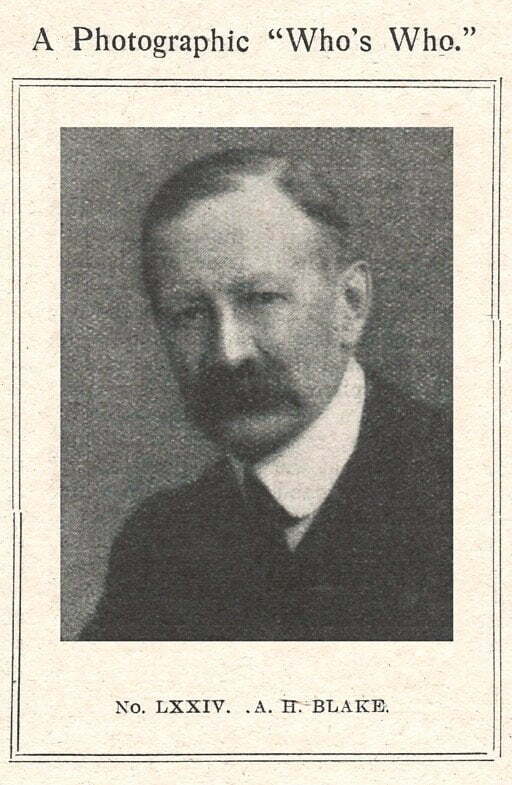
Part 1 of this series (November 2020) described Rev. Blake’s early life and interests before Compton.
Part 2 (December 2020) covered events in Compton and Shawford during his short time as Rector (April 1902 to December 1903).
We don’t know exactly when he “got the bug” but the enduring passion of his life was photography.
AHB and the Winchester Scientific and Literary Society.
After coming to Compton, Rev. A.H.W. Blake soon joined the Winchester Scientific and Literary Society (WSLS or WLSS).
An immediate impact
We reported in Part 2 that Blake had turned down job offers because they were not “sufficiently challenging for a man of his energies”. We can see this in the way that he threw himself into the WSLS whilst trying to kick-start the controversial church accommodation project in Compton.
Monday 20 October 1902: The WSLS first meeting of the season, at the Masonic Hall, was a lantern lecture by the Rev J.E.Kelsall, Rector of Milton in the New Forest, who wrote “The Birds of Hampshire and the Isle of Wight” (1905)
After the meeting, Rev A.H.Blake was busy collecting names of members who would be interested in joining a Photographic Section.
AGM at the Guildhall Tuesday 25 November 1902: AHB was elected to the WSLS committee. He put on an exhibition of his “exquisite photos of rural and other scenery, including cloud and evening effects”.
Leading the new Photographic Section
January 1903: AHB was announced as leader of the new Photographic Section. The subscription was to be 5/- per year. Its objectives sound very familiar to the modern reader.
29 January 1903: The first meeting of the Photographic Section, at the Old Market House restaurant, “left no doubt in the minds of any present that the Rev A.H.Blake was a past-master in the photographic art”.
He spoke about how to make skies more interesting by “sunning down”, also known as “dodging and burning”, while printing. He touched on sky replacement – replacing a dull sky by a more interesting sky from another photograph.
Nearly 120 years on, Photoshop 2021 gained a sky replacement feature.
9 March 1903: AHB chairs a lecture on “Photography with Artistic Aims” at St. John’s Rooms.
4 June 1903: AHB leads a Photographic Section walkabout for about 14 members through the Twyford water meadows, starting from Shawford Station.
29 October 1903 at Dumper’s Restaurant: AHB gives the first in a planned series of winter lectures to the Photographic Section.
Thursday 18 February 1904 at Dumper’s Rooms: The Photographic Section has a demonstration of gaslight printing papers. The brief report in the Hampshire Chronicle makes no mention of Blake’s abrupt departure at the end of 1903.
That was the last reference to the Photographic Section which we found in the Chronicle’s archive.
The London years
From 1892 to 1896 Blake had lived in London as Chaplain to the Kensington Workhouse and Infirmary. His duties allowed him time to practice his photography.
Travel advice for photographers
Throughout 1896 Blake published a series on ‘Picturesque Spots’ in The Amateur Photographer. His articles provided practical advice for photographers looking for places to take their cameras on a day trip from London.
In each article he would typically tell readers about travel, local attractions – often houses associated with literary figures – and suggest picturesque views and the best angles for capturing them on camera.[9]Ministers of ‘the Black Art’: the engagement of British clergy with photography, 1839-1914. University of Exeter PhD Thesis by James Downs. Quoted by permission of the author. See also … Continue reading
Blake’s return to London in 1904 after leaving Compton allowed him to focus full time on photography.
As far as we can tell, after Compton Blake never had another clerical appointment.
When he visited his old parish of Windsor and Eton, they still remembered him as Rev. A.H.Blake. Other than that, he seems never to have used the title “Rev.” again.
He gave lectures, exhibitions of his own work and judged competitions. He wrote books and magazine articles, including an occasional “Our London Letter” column for American Photography.
He was the founder of the London School of Landscape Photography, Photographic Editor of the Morning Post for many years, founder and president of the London and Country Rambling Society.
He also founded the Society of Night Photographers of England.
Books
His Photography book, a beginners’ introduction, had been published by Routledge in 1898.
In 1920, “Things Seen in London” was published by Seeley, Service & Co., as part of their “Things Seen” little tourist guides.
Its final chapter, “London by Night”, includes tips on night photography.
His next book, London Cameos”, was published by Herbert Jenkins in 1930. This is an illustrated guide to some 122 of the lesser-known sights of London many of which threatened by redevelopment.
These two books were based on the popular guided tours he led in London.
Precursor of Zoom and YouTube?
As the press notices below show, you could sometimes listen to AHB’s talks without his being there. He was 70 in 1924, so perhaps he was cutting down on travelling. Others could read his words.
Why no FRPS?
Although he was a Fellow of the Royal Historical Society and the Royal Geographical Society, it may seem surprising that he was not a Fellow of the Royal Photographic Society.
But in 1908 he had accepted an invitation to join the Brotherhood of the Linked Ring[10]Ministers of ‘the Black Art’: the engagement of British clergy with photography, 1839-1914. University of Exeter PhD Thesis by James Downs. Quoted by permission of the author. Because of fears that the RPS and others were focussing on the scientific and commercial side of photography, the exclusive Linked Ring had been created to promote the artistic and fine art aspects of photography.
Family Life
[this section rewritten for the website to include additional information]
28 July 1880, AHB married Annie Maria Powell in Great Malvern, Worcestershire.
Her birth on 8 August 1858 had been registered in Upton-upon-Severn district as Anne Maria Powell, but at her baptism in Great Malvern on 5 September 1858 her forenames were Annie Maria.
The 1881 census shows AHB and Annie Maria living in a large house in Lansdowne Crescent in Malvern. Living with them were AHB’s widowed mother Frances, a 22-year-old Irish-born teacher, five boarders (boys aged 9 to 14, recorded as “scholars”), a matron, two housemaids and a gardener.[11]See The Headmaster
The 1891 census shows Rev A H Blake[12]his name was recorded as Alford H Blake – presumably a slip of the pen and Annie M Blake as visitors in a house in Bath. The day of the census was Sunday 5 April, which in 1891 was the Sunday after Easter. That’s typically a Sunday when a priest might take time off after all the extra services over Easter. By then AHB was already leading photographic outings for his parishioners in Windsor and Eton, so it wouldn’t be surprising to find him in Bath for a photographic weekend.
As far as we know, they had no children, but AHB’s wife Annie Maria had played her part as Rector’s wife while they lived in Compton.
In London it seems that they may have spent time apart.
His address was given as the Blenheim Club in 1908. On the day of the 1911 census, Annie Maria was the only person at 23 Digby Mansions in Hammersmith.
There is no record for Alfred H Blake in the 1911 census. But there is a census record for Arthur Howard Blake, born in Tamworth, giving his year of birth as 1864. This A H Blake gave his occupation as “journalist” and was listed as a visitor at 10 St George’s Mansions Westminster, the address of 35-year-old Emily Glady Court, a landscape painter. Could this be the same person?
For the 1921 census, they were both living at 23 Bridge Avenue Mews in Hammersmith. AHB gave his occupation as “Clerk in Holy Orders (retired)” and his employer as “Lecturing Writing Own Account” Annie’s occupation was “Home Duties”.
The 1939 National Register shows Annie Maria still at 23 Bridge Avenue in Hammersmith. By then AHB was living at 8 Normand Mansions in West Kensington, giving his occupation as Lecturer.
AHB died on 15 September 1941, aged 87. Annie Maria died a year later, in 1942. Their deaths were registered in Fulham.
We still don’t know why he left Compton so abruptly. But whatever errors he may have made or whomever he may have offended, he deserves more than just a footnote in parish histories.
Adrian Walmsley
For the C&S Local History Society
A.H.Blake – a few selected press cuttings
Acknowledgments
My thanks to Mike Pettigrew who sent me copies of the two photographs by AHB reproduced above and started me on this voyage of discovery.
Thanks also to James Downs, whose PhD thesis onMinisters of ‘the Black Art’ was an invaluable source.
References
| ↑1 | Compton Near Winchester, Being an Enquiry into the History of a Hampshire Parish, by J.S.Drew. Published by Warren & Son, 1939 |
|---|---|
| ↑2 | “The Story of a Quiet Parish – Compton and Shawford” by Barbara Clegg, 1963. Published by the C&S Local History Society 2019 in aid of church funds. |
| ↑3 | Mike Pettigrew, private correspondence |
| ↑4 | The British Newspaper Archive (passim) |
| ↑5 | ‘St. Mary Abbots Hospital’, in Survey of London: Volume 42, Kensington Square To Earl’s Court, ed. Hermione Hobhouse (London, 1986), pp. 343-364. British History Online http://www.british-history.ac.uk/survey-london/vol42/pp343-364 [accessed 15 January 2022]. |
| ↑6 | The Hampshire Chronicle archive at the Hampshire Record Office (passim) |
| ↑7 | Reproduced by permission from Hampshire Records Office item reference 1W76/PW6 |
| ↑8 | Bishop Herbert Ryle had become Bishop of Winchester in the spring of 1903 after his predecessor, Bishop Randall Davidson had been translated to Canterbury. Herbert Ryle had earlier been principal of St David’s College, Lampeter, and, from December 1900 to early 1903, Bishop of Exeter. The University of Wales Trinity Saint David website tells us that on arrival in Winchester, Bishop Ryle alarmed high church men in his new diocese by forbidding certain ritual practices. Could this have been a factor in Blake’s departure? We know that Blake had been warned about his high-church practices whilst chaplain of the Kensington Workhouse and Infirmary. |
| ↑9 | Ministers of ‘the Black Art’: the engagement of British clergy with photography, 1839-1914. University of Exeter PhD Thesis by James Downs. Quoted by permission of the author. See also https://darklanecreative.com/ministers-of-the-black-art/ |
| ↑10 | Ministers of ‘the Black Art’: the engagement of British clergy with photography, 1839-1914. University of Exeter PhD Thesis by James Downs. Quoted by permission of the author |
| ↑11 | See The Headmaster |
| ↑12 | his name was recorded as Alford H Blake – presumably a slip of the pen |


